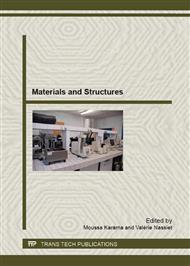p.41
p.49
p.57
p.65
p.73
p.85
p.97
p.105
p.113
Reliability Analysis of Vibro-Acoustic Problem
Abstract:
The comprehension of the interactions between a fluid and an elastic solid has a capital importance in several industrial applications. When a structure vibrates in the presence of a fluid, there is interaction between the natural waves of each media: the fluid flow generates a structural deformation and/or the movement of a solid causes the displacement of the fluid. These applications require an effective coupling. In addition, the dynamic analysis of the industrial systems is often expensive from the numerical point of view. For the coupling fluid-structure finite elements models, the importance of the size reduction becomes obvious because the fluid's freedom degrees will be added to those of the structure. A method of condensation will be used to reduce the matrixes size. One of the principal hypothesis in the use of component mode synthesis method is that the model is deterministic; it is to say that parameters used in the model have a defined and fixed values. Furthermore, the knowledge of variation response of a structure involving uncertain materials, geometrical parameters, boundary conditions, tolerances of manufactures and loading conditions is essential in global process of conception. In order to do that, the modal condensation method is extended to reliability analysis for the coupled fluid-structure finite elements models. A numerical vibratory study is leaded on a plate in the air and in immersion in water taking into account the acoustic aspect. The results of the reliability analysis tend to show the effectiveness of the proposed approach based on the condensation techniques.
Info:
Periodical:
Pages:
73-83
Citation:
Online since:
April 2013
Authors:
Price:
Сopyright:
© 2013 Trans Tech Publications Ltd. All Rights Reserved
Share:
Citation:


